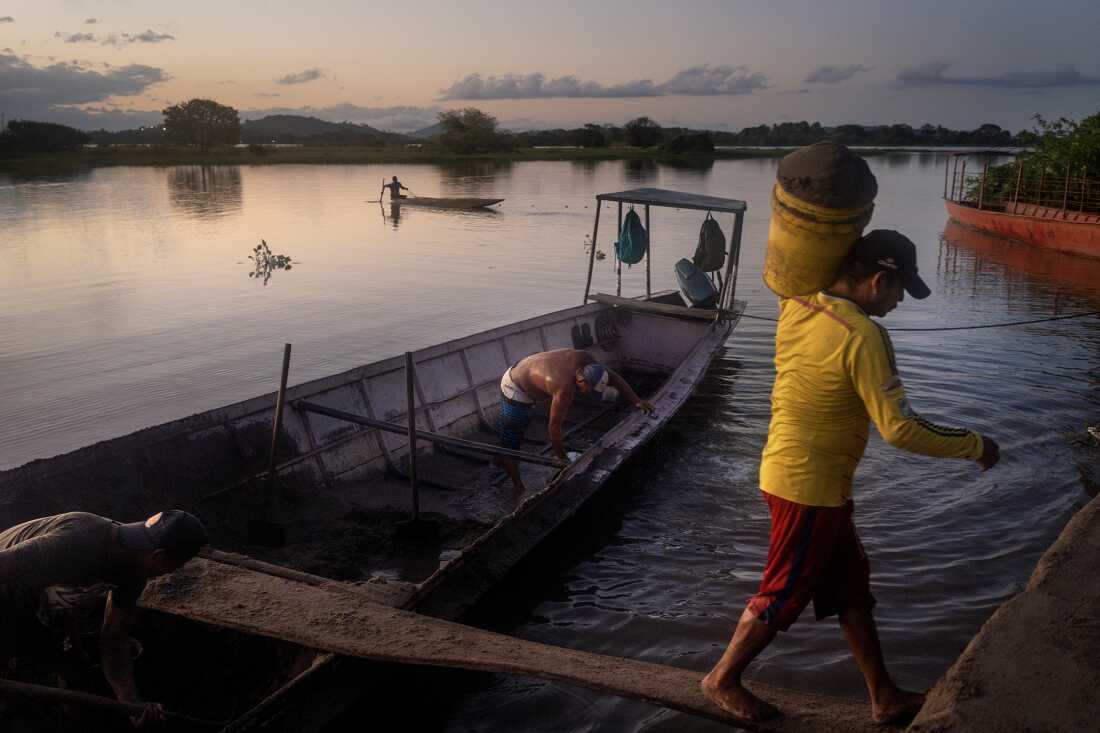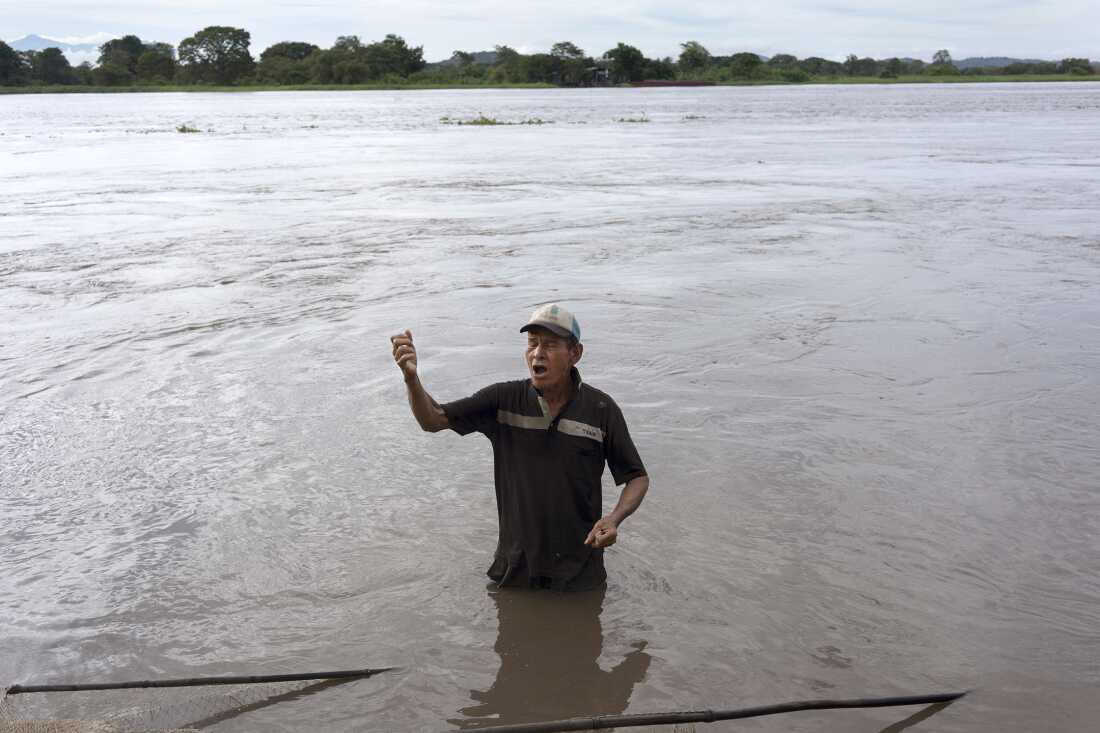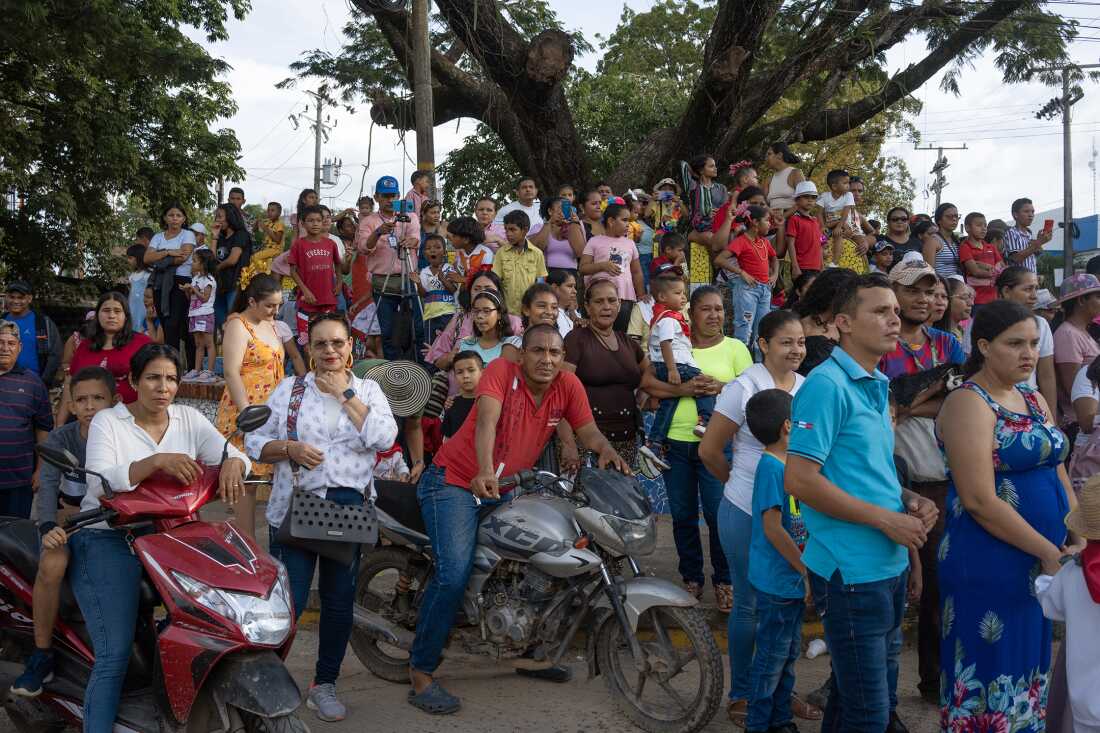The Picture Show

Gaitero groups, dancers and the general public parade to the cemetery in San Jacinto, Colombia, on Aug. 14, 2022. Karla Gachet hide caption
toggle caption
Karla Gachet
This is part of a special series, Cumbia Across Latin America, a visual report across six countries covering the people, places and cultures that keep this music genre alive.
All dance was seen as rebellious during colonial times. The Caribbean coast of Colombia witnessed the birth of cumbia in the river system of the Mompos Depression, an immense wetland, and in a small mountain range known as Montes de María. During the colonization of America in the 16th century, thousands of enslaved individuals arrived from the African continent at the port of Cartagena. Forced to leave their homeland, they brought their music, religious drums and spirituality. These drums were also used to send secret messages during the maroonage process.

Diomar Trigos (from left to right), Esneider Páez, Humberto Cañizares and Sebastián Suárez stand in the street after participating in the Pocabuyano Parade in El Banco, Magdalena, Colombia, during the National Festival of Cumbia, on Oct. 15, 2022. They are representing the town of San Alberto, Cesar, and are wearing traditional cumbia clothing. Ivan Kashinsky hide caption
toggle caption
Ivan Kashinsky

Workers unload sand at the El Cesar dock in El Banco, Colombia, on Aug. 8, 2022. In the distance, a fishing boat is also seen returning to the dock. Karla Gachet hide caption
toggle caption
Karla Gachet

José Benito Africano Mendoza sings cumbias to people hanging out along the Magdalena River in El Banco, Magdalena, Colombia, on Aug. 7, 2022. Ivan Kashinsky hide caption
toggle caption
Ivan Kashinsky
The swamp region was home to many Indigenous cultures, now referred to as amphibious due to their proximity to water. These cultures are said to have used flutes made from bone in ceremonial rites. In the Montes de María, where additional Indigenous groups lived, small statuettes of human figures with instruments resembling gaitas (Indigenous flutes) — also known as chuanas — have been found. The clothing used in traditional dance, trova, and couple dancing, and the language of the songs exemplify European influence. The musical instruments of this region are crafted from the earth, mimicking birds that fly along the banks of rivers, the sound of rain or the beating of a heart.

Carlos Casas Serrano makes a tambor alegre, a traditional drum used in cumbia, in the workshop of Colilo Lara on Aug. 12, 2022, in San Jacinto, Bolivar, Colombia, during the Festival Nacional Auntóctono de Gaitas. Ivan Kashinksy hide caption
toggle caption
Ivan Kashinksy

A portrait of Orlando Jose Blanco Alvarez and his tambor alegre on Aug. 12, 2022, during the Festival Nacional Autóctono de Gaitas in San Jacinto, Colombia. Karla Gachet hide caption
toggle caption
Karla Gachet

Hundreds of participants, dancers, musicians and empresses parade through the city of El Banco, Magdalena, Colombia, during the Festival Nacional de la Cumbia José Barros Palomino on Oct. 15, 2022. Karla Gachet hide caption
toggle caption
Karla Gachet

Yojan David Laguna Ospino and Jakelin Guillen Epalza, both 11, from the dance group Costa Azul Danza Indio Manzos, pose in the community of Playa Blanca in Guamal, near El Banco, Magdalena, Colombia, on Aug. 6, 2022. Ivan Kashinskhy hide caption
toggle caption
Ivan Kashinskhy

Melgen Melendez Baena, a cumbia dancer from Barranquilla, holds up his hand as Cristobal Perez Santos, 72, watches the parade of gaitero groups and dancers from his wheel chair as they move through the town and then to the cemetery to pay tribute to the late gaiteros on Aug. 14, 2022, in San Jacinto, Bolivar, Colombia. Ivan Kashinksy hide caption
toggle caption
Ivan Kashinksy

The gaita ensemble Son de Quitasol practice on Aug. 13, 2022, during the Festival Nacional Autóctono de Gaitas de San Jacinto. One of the local schools was used by musicians from other places as a place to sleep. Karla Gachet hide caption
toggle caption
Karla Gachet







